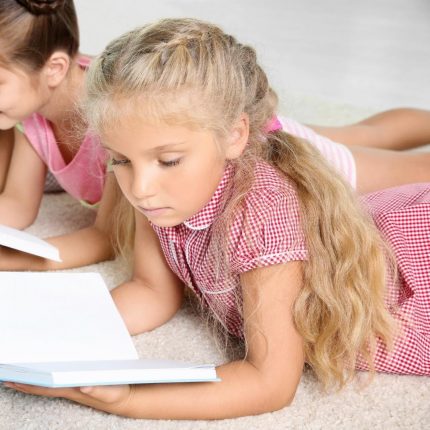
Multiple Intelligences Method to Homeschool
June 19, 2019Multiple Intelligences approach to education is based on the theory by Howard Gardner. Gardner is a developmental psychologist and professor at Harvard Graduate School of Education. He proposed this theory in his book, Frames of Mind, which was published in 1983.
Multiple Intelligences for Individual Potential
The theory of Multiple Intelligence views each child as intelligent in their own way. Individual potential is often determined by academic success. But, academics are not the only way to be successful.
If you judge a fish by how well it can climb a tree, it will spend its whole life thinking it is stupid. Gardener’s approach includes eight different types of intelligence or “smarts”:
- Verbal-linguistic (or Word Smart)
- Logical-mathematical (or Logic Smart)
- Naturalistic (or Nature Smart)
- Interpersonal (or People Smart)
- Intrapersonal (or Self Smart
- Visual-spatial (or Picture Smart)
- Bodily-kinesthetic (or Body Smart)
- Musical-rhythmic (or Music Smart)
Everyone is smart. Education should not leave the child wondering “am I smart?” Instead, education should teach children to explore “how am I smart?”
How Am I Smart?
What are your child’s favorite subjects in school? What are their interests and habits? How do they spend their time and money? What do they talk about?
- Likes words, picks up vocabulary and languages, talks a lot. That’s people smart.
- Likes numbers and science, sees patterns and connections, asks “why?” That’s logic smart.
- Likes animals, notices surroundings, has a green thumb. That’s nature smart
- Likes people, notices body language, communicates and makes friends easily. That’s people smart.
- Knows themselves, sets goals, likes time alone for reflective thought. That’s self-smart.
- Thinks in pictures, remembers faces, draws/doodles a lot. That’s picture smart.
- Thinks with movement and touch, has busy hands/feet, likes crafting and building. That’s body smart.
- Likes music, makes musical sounds with the body (snapping, clapping, humming, drumming). That’s music smart.
Also, how do they misbehave? For example, a word smart person may also lie or gossip. Or talk too much. The number of words and the content of the words can be an indicator of this kind of “smarts”. Consider what other misbehaviors might also be indicators of other kinds of smarts.
Nurture Unique Abilities with Multiple Intelligences
Most people have two or three types of intelligence. This unique combination of smarts equips individuals for success. The teacher’s role is to nurture all types of smarts.
Avoid teaching to one type of intelligence or labeling students to one type. Individuals can develop unexpected types of intelligence or may change over their lifetime. Exposure to all the possible abilities enables individuals to discover their unique abilities.
Note: Multiple Intelligence approach is *NOT* the same thing as learning styles (visual, auditory, kinesthetic). Learning styles involves the various senses to take in information. Multiple Intelligence theory is about how the brain processes information.
Problem-solving Possibilities
Multiple intelligences theory can be applied to any subject. It does not specify any particular scope and sequence for study topics. Whatever the subject, students approach understanding from different viewpoints.
Multiple intelligences are problem-solving capabilities. There are multiple ways to solve a
problem, especially problems that are complex and require innovative thinking. Any problem has logical, poetic, social, rhythmical, artistic, musical, physical and geographic points of entry.
Offer a variety of learning experiences so students can learn about their preferences. Allow students to use all the types of intelligence to solve a problem — read about it, examine it, draw it, act it out, work to a rhythm, relate it to nature, talk about it, or reflect on it.
Example of a Mulitple Intelligences Homeschool Schedule
The goal in “Multiple Intelligences” homeschooling is to adapt scheduling and materials so that they bring out and work with the child’s natural strengths.
- Reading: One child may begin reading at age five, another child may not be ready until age seven. One child may learn best by being read to or by listening to audio tapes, another child may carry a book around all day.
- Writing: One child may like to write with a pen or pencil, one child may prefer typing their work on a computer, and another child may feel frustrated by the writing process and prefer to give oral reports of what they’ve learned.
- Math: Some children learn well from workbooks, other children prefer using hands-on manipulatives like beads or fraction rods. Still others, do math quickly and easily in their head and feel frustrated when forced to answer problems on paper.
- Science: Almost all children learn science best by having plenty of hands-on experiences.
- History/Geography: Children learn best by “doing,” so families plan activities where the child can experience for themselves the clothing, food, and music of a particular era or culture.
- Music/Sports/Arts: Families expose children to a variety of experiences, watch to see which activities spark their children’s passion, and then support their children in that activity.
Podcasts About Homeschooling Methods
Is the Multiple Intelligence Approach right for you?

Kim Andrysczyk is a secular homeschool veteran, homeschool group leader, coffee addict, sarcasm expert, and an accidental blogger. She’s the self-appointed busybody of homeschooling in South Carolina, always on the lookout for new connections to people, places, and resources. Find her at The South Carolina Homeschooling Connection and Facebook.
Latest Posts

Guest Post by Gabriel Morse For several years, I sat for long hours every day behind one of those battleship gray desks in a windowless, dull, gray office. The pay was enough to take care…
Read more >
This post is sponsored by Little Monsters Universe. I'm Tina Salmanowitz, an advocate for homeschooling and science education. With over a decade of experience as a science educator (in class…
Read more >
This post is sponsored by Time4Learning. Before the pandemic, it was business as usual for Boca Raton resident Nikki Warris. Her two daughters, 5-year-old Natalie and 8-year-old Lexi were…
Read more >

